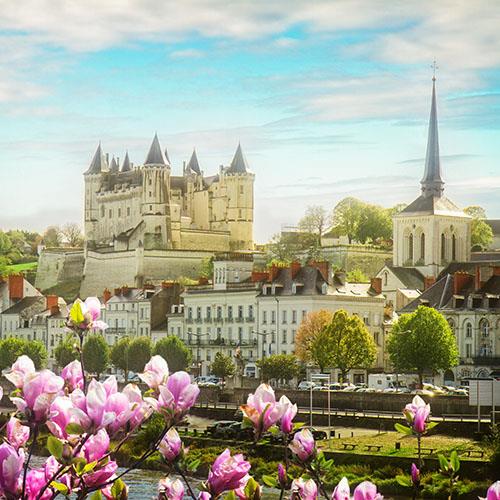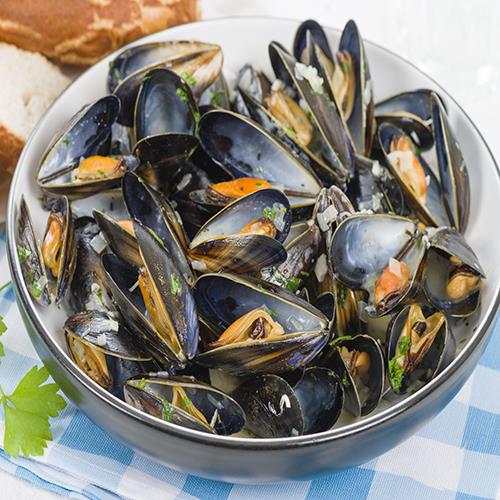EXPERIENCE PAYS DE LA LOIRE

Overview
The Pays de la Loire area of Loire Valley is known as the 'valley of the kings' due to its royal past and their legacy of châteaux, abbeys, romantic churches and manor houses. The region is made up of five departments, stretching from the southern edge of Normandy down to the border of Poitour-Charentes on the western coast, it is one of the most interesting landscapes in the country. The 5 departments are: Loire-Atlantique, Mayenne, Maine-et-Loire, Sarthe and Vendée.
The landscape is dominated by the sprawling countryside of varied natural landscapes, a stunning coastline and salt marshes, boasting many quiet and charming rural villages and charming towns. Main points include Le Mans-Laval, Saumur/Fontevraud, Angers and the very popular city of Nantes, all the way to the Peninsula of Guerande and the mighty Atlantic Ocean.






Cities, Towns and Villages
The Pays de la Loire combines charming villages and small authentic towns. The area offers one-of-a-kind places, hidden gems far away from the urbanization, and lively city life.
Le Mans is located 50 miles north of Tours, and south of Alencon, on River Sarthe. It used to be the capital of Maine province but is now the capital of Sarthe. The city has been the host of the internationally popular 24 Hours of Le Mans since 1923. More than a quarter of a million people head to the small town of Le Mans in mid-June for the epic event - one of the most famous car races in the world. Aside from the legendary race course, Le Mans offers a fantastic old town, Roman ruins, beautiful cobblestoned alleyways lined with half-timbered houses, and fabulous medieval architecture.
Saumur is France’s military and equestrian center based in the Western Loire. For over two centuries the cavaliers of the reenactment of Cadre Noir have been the pride of this city, which is also home of the National Riding School. The town’s castle, an elaborate residence for the Dukes of Anjou in the Middle Ages and bastion of Protestantism in the 17th century, overlooks the peaceful river and the charming Old Town, one of the most beautiful in the Loire Valley. Extending over nearly 37 acres, Fontevraud is the largest group of monastic buildings anywhere in Europe. Of the five abbeys founded in the 11th century, three still exist.
Fontevraud-l'Abbaye is one of the largest surviving monastic cities of the middle ages. The abbey was listed as a UNESCO World Heritage Site. Fontevraud also presents artistic and cultural activities including concerts, events, exhibitions, debates and conferences, and artistic installations throughout the year.
The historical capital city of Angers, situated in the province of Anjou, in the Western Loire of France is a charming and laid back city with a slight bohemian air. The city boasts breathtaking architecture and a thriving cafe culture, thanks in part to the dynamic presence of its university students. Throughout history it was considered the intellectual center of France and modern-day Angers is not far from its historical past - it’s a city famous for its fabulous tapestries, spectacular art galleries and wonderful museums. The world's largest liqueur, Cointreau, is produced in Angers.
The town of Montreuil-Bellay retains almost all of its medieval walls, making it one of the last fortified towns of the Anjou region. The chateau has lovely gardens overlooking the river and because of its lofty position, it offers some great panoramic views. There is a nice choice of restaurants by the chateau and the river. You will also find by the river "Promenade J.R.R.Tolkien" which has given rise to the stories of Montreuil-Bellay. Ths home was once a holiday home of the writer and the chateau and its surroundings being inspirational in forming some of his literal locations. There have been fortifications on this site from the 11th century.
Nantes, considered the gateway to the Atlantic, is the capital of the region. The city is a vibrant university city where history and present day are blended together to offer a fabulous mix of art, culture and fun. The city’s various quarters are steeped in history and its museums are rich in art collections. Don’t miss the Gothic Cathedral with its ducal tombs, the passage of Pommeraye of the Graslin neighborhood and the rue Crebillon with its chic boutiques.
The town of Ponts-de-Cé, of Gallo-Roman origin, took on its full significance in the ninth century with the construction of a bridge fortified by Charles the Bald, grandson of Charlemagne, in order to defend himself from the invader Norman. Second favorite residence of King René in the 15th century, it was also a privileged place of reception for King Louis XI at the same time. In the 17th century, Les Ponts-de-Cé was the scene of a famous battle between Louis XIII and his mother, Marie de Medici, who was then removed from the regency. Today, the city of the Loire is still appreciated for its rich architectural heritage, as well as for its proximity with Angers and its many tourist and historical sites.
Chalonnes-sur-Loire:
The area of the Loire Valley from Sully-sur-Loire (Loiret) to Chalonnes-sur-Loire (Anjou), has been listed as UNESCO world heritage, an accreditation which makes it the largest such listed site in France. An area of nature and culture, its "living cultural landscapes" sculpted by the river Loire and human activity, are home to majestic châteaux and iconic Loire Valley cities. Come and discover an unspoiled region where the art of living is a priority.


Food and Drink
The cuisine in this area can be quite difficult to pin down because the region is situated both inland and served by the Atlantic Ocean. Without a doubt, the region offers an abundance of quality seafood and fish: mussels, lobster, crabs, king prawns, mullet and sea bass. The oysters in Nantes are delicious, and even better paired with a light Muscadet, which is produced in the countryside outside the city.
For delicious treats, be sure to try the popular petit beurre biscuit of Nantes. Having originated in the city during the 19th century, this classic French butter cookie has inspired a number of imitators around the world, with the all-butter recipe, golden brown finish and distinctive shape all contributing to its large popularity. Just as appealing is the chocolate-covered variety, the petit ecolier, distinctive in appearance with the image of a traditional schoolboy formed in milk chocolate.
Along with the rest of the Loire Valley, you’ll also find the western region a huge wine growing area with the vineyards of red, white and fruity rosé vintages of Saumur and Anjou being amongst the first you will see when travelling south through western France. The dry white Muscadet which is so perfect with seafood is produced near the commercial port of Nantes. In addition to wines available, the area is also renowned for a range of spirits and liqueurs that have achieved international recognition. The traditional syrup known as Le Nantillais is widely enjoyed, while the orange liqueur, Cointreau, has become a crowd pleaser around the world since it was first developed in Angers in 1849.

Pays de la Loire
The Pays de la Loire is one of the true highlights of France on the western coast, boasting 280-miles of varied and diverse coastline with long sandy beaches, secluded creeks, lively fishing ports and stunning seaside resorts. Discover La Baule, officially recognized as one of the world’s most beautiful bays, with it Belle epoque villas and the long sandy beaches which it shares with Le Pouliguen and Pornichet; the charming family resort of St Jean de Montes; Les Sables d’Olonne, the starting point for the Vendee Globe yacht race; and the quaint port of Pornic on the Jade Coast. Just off the coast you’ll find the Yeu or Noirmoutier, two charming islands that each offer a very different feel.